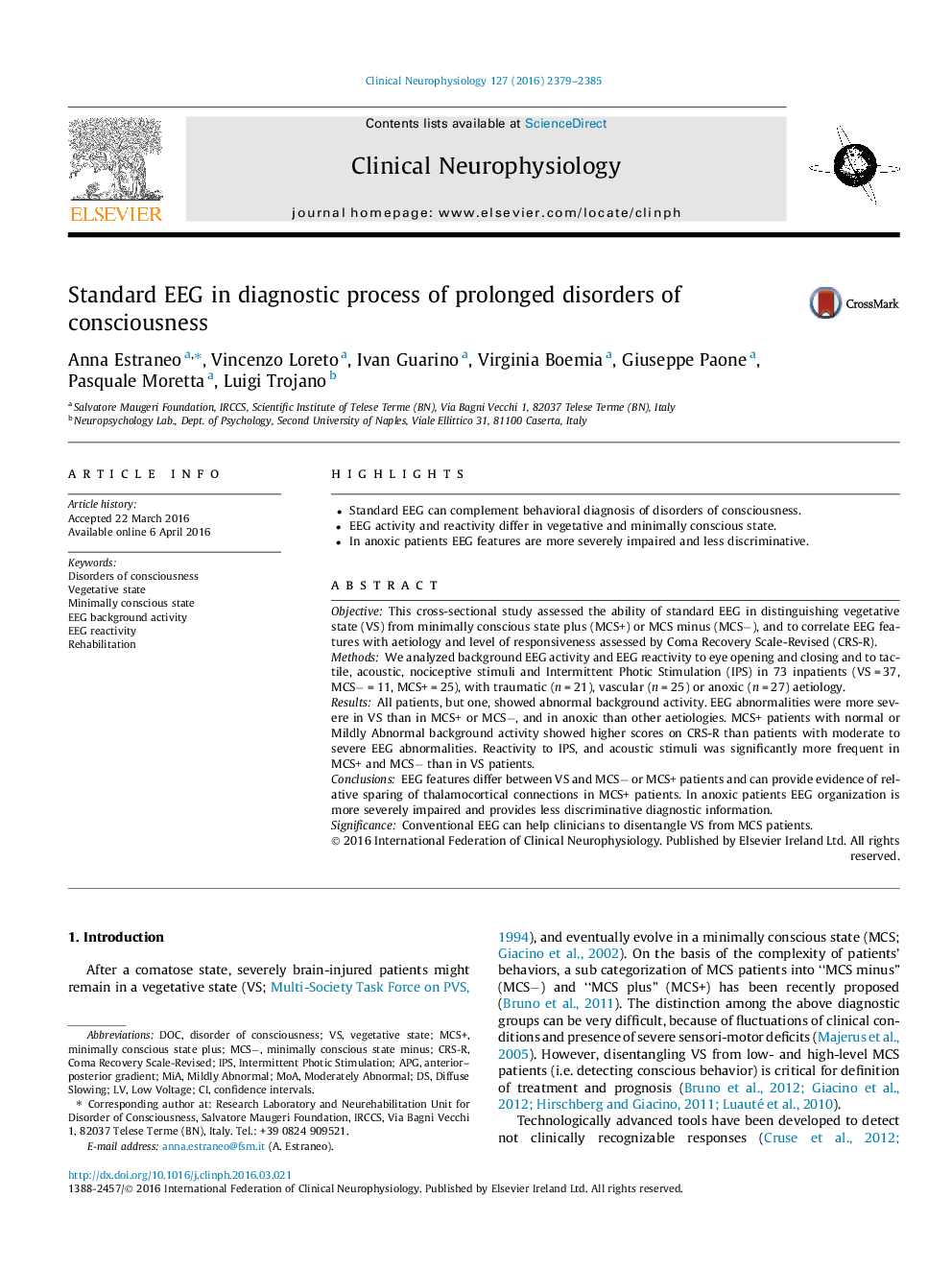| Article ID | Journal | Published Year | Pages | File Type |
|---|---|---|---|---|
| 3042748 | Clinical Neurophysiology | 2016 | 7 Pages |
•Standard EEG can complement behavioral diagnosis of disorders of consciousness.•EEG activity and reactivity differ in vegetative and minimally conscious state.•In anoxic patients EEG features are more severely impaired and less discriminative.
ObjectiveThis cross-sectional study assessed the ability of standard EEG in distinguishing vegetative state (VS) from minimally conscious state plus (MCS+) or MCS minus (MCS−), and to correlate EEG features with aetiology and level of responsiveness assessed by Coma Recovery Scale-Revised (CRS-R).MethodsWe analyzed background EEG activity and EEG reactivity to eye opening and closing and to tactile, acoustic, nociceptive stimuli and Intermittent Photic Stimulation (IPS) in 73 inpatients (VS = 37, MCS− = 11, MCS+ = 25), with traumatic (n = 21), vascular (n = 25) or anoxic (n = 27) aetiology.ResultsAll patients, but one, showed abnormal background activity. EEG abnormalities were more severe in VS than in MCS+ or MCS−, and in anoxic than other aetiologies. MCS+ patients with normal or Mildly Abnormal background activity showed higher scores on CRS-R than patients with moderate to severe EEG abnormalities. Reactivity to IPS, and acoustic stimuli was significantly more frequent in MCS+ and MCS− than in VS patients.ConclusionsEEG features differ between VS and MCS− or MCS+ patients and can provide evidence of relative sparing of thalamocortical connections in MCS+ patients. In anoxic patients EEG organization is more severely impaired and provides less discriminative diagnostic information.SignificanceConventional EEG can help clinicians to disentangle VS from MCS patients.
